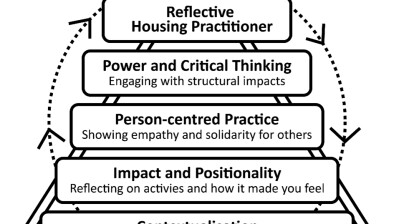Blog: Ten propositions to support planning for housing
Craig McLaren, national director for Royal Town Planning Institute (RTPI) Scotland, outlines work the Institute is taking forward that explores what can be done to improve how we plan for housing.
There have been a number of comments and debates about planning for housing in the last few months including the RICS Scottish Housing Commission, the RTPI publication Delivering Large Scale Housing: Unlocking Schemes and Sites to Help Meets the UK’s Housing Needs and a recent conference and series of discussions held by Scottish Government. RTPI Scotland is keen to use this debate to ensure planning and planners are seen as key to providing solutions on these issues, especially in the run up to Scottish Parliamentary Election in May 2016. Given this we are working to initiate a discussion that focuses the debate on the important roles that planning can play, as well is the things we need to do this.
We have set out ten propositions to kick start this discussion. These are not necessarily Institute policy. Rather they aim to stimulate debate and discussion to help shape a short policy paper that we hope to publish in spring 2015. The starting point is that we want to give everyone in Scotland the opportunity to have a safe and comfortable home. The propositions then ask how we can plan and deliver housing growth that provides sustainable, high quality homes and communities. They are:
We need to accept that there is a need and demand for housing that has to be met. This will need to be embedded in culture of organisations with politicians and officers recognising the big picture. It may also challenge approaches to community involvement and engagement in housing developments and the resistance that can arise towards proposals. It also poses the question as to whether there is a need, or desire, to introduce national and/or regional housing targets.
If we are to meet need and demand we need to show how why we need new housing, what we want to achieve and what new housing, communities and places will look like. This could help to ensure that stakeholders understand why housing needs to be provided and what benefits it can bring. This raises a number of questions around the role of a future National Planning Framework (NPF) in providing more vision on housing and the subsequent roles of Strategic Development Plans (especially in terms of infrastructure provision) and the role of Local Development Plans.
We need to allow planners, planning and the planning system to have the right conditions to provide solutions. This may mean focussing the system on taking a proactive, upstream, and visionary approaches. It should recognise that planning can be integrative in supporting outcomes-focussed approaches. However, this may well depend on the corporate influence that planning has and whether it is recognised as a service that can provide value within the public sector.
We need bridge the gap between planning vision and the delivery of appropriate development. This means looking at how we can better match resources to planning vision (and vice versa) and move from development plan to investment plan. It asks about the State’s role to as enabler and investor and whether it has the powers and interventions needed to make this happen. It opens the debate on how engaged the public sector needs to be in assembling land and whether there a delivery models that should be explored such as development corporations. And it asks questions of the current Section 75 model.
We need to make the case for, and show the value of, linking investments in infrastructure with development, and vice versa. This asks if infrastructure policy, allocation and investment has a long term vision with proper use of master planning rather than ad hoc developments. It means exploring if local authorities need to/ can take on investment from developers and make more effective use of it borrowing powers. And it prompts the question on how we can have upfront and upstream infrastructure and use this to minimise risk for developers, investors and communities.
Perceived risk in housing development is restricting borrowing, investment and development. Given this there is a need to examine who is best placed to take risks and how risk can be shared. It also asks how proactive, upstream planning can provide more certainty for investment and if local authorities can work with the private sector through Joint Ventures, Local Asset Back Vehicles, and funding models such as Tax Incremental Financing, Prudential Borrowing, Bonds and underwriting.
The public sector tends to think in terms of programmes, funding streams and initiatives, rather than about places. This can often lead to a lack of spatial thinking and limited policy and investment based on place. Given this, there is a need to promote and look at how to have more effective links between community planning and spatial planning. We should also be gathering evidence that articulates and recognises the value of creating good places.
We need to move thinking and policy away from thinking of housing in terms of units and numbers so that it takes a more holistic view of homes as part of communities and places. As part of this there is a need to see value of a home being measured beyond a simple market value and look to the length of its contribution to a community and the economic, social, health and prevention benefits.
We need to examine where new housing can be located so as to maximise sustainable development. This needs to cover questions such as can we rely on brownfield? What role for town/ city/ village extensions? Do we need new settlements? What should be the role for NPF in facilitating and influencing this? What future for Green Belt?
We need to ensure that we maximise the quality of future developments and the roles of the Place Standard and how we measure quality.
We are testing these propositions at a number of forums and events including the Scottish Forum for Planning, the Parliamentary Cross Party Group on Architecture and the Built Environment and a fringe event at the SNP Party Conference. We are very keen to get Members’ thoughts on these and to start a discourse and discussion on the way forward. Any comments should be sent to scotland@rtpi.org.uk or send comments to us on Twitter on @RTPIScotland.









